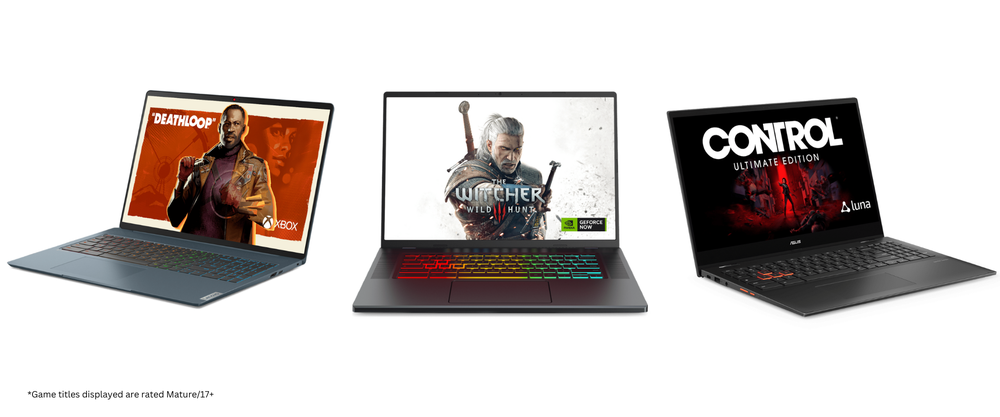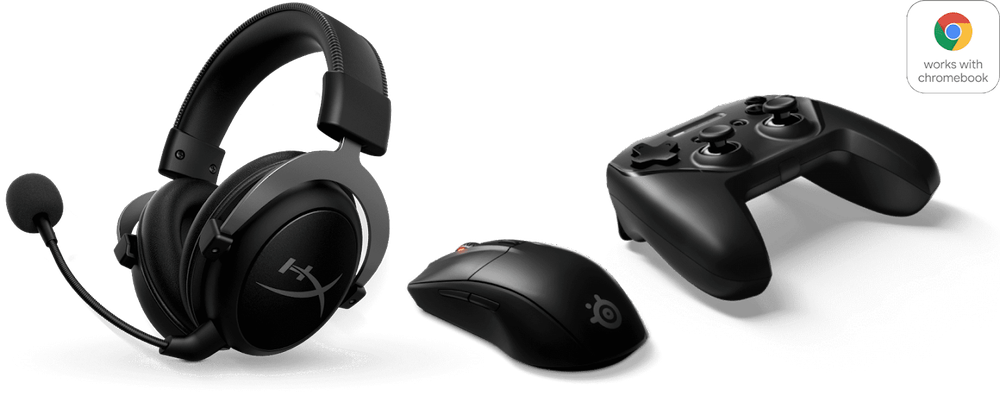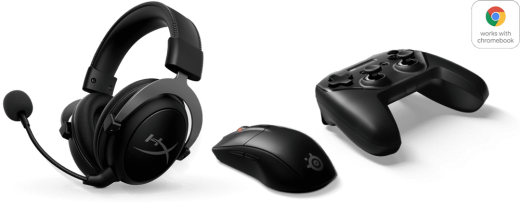Acer’s cloud gaming Chromebook is a solid laptop, even if you don’t game
Google is trying to make Chromebooks built for cloud gaming
ASUS, Acer and Lenovo built Chromebooks optimized to run services like GeForce Now.

One part of Google may have given up on cloud gaming, with Stadia set to be discontinued in a few months. But on the ChromeOS team, there’s a whole new initiative to try and push back on the whole “you can’t game on a Chromebook” thing. Today, Google — along with a handful of hardware and software partners — are announcing what it calls “the world’s first laptops built for cloud gaming.”
Stripping back the hyperbole, what does this mean in practice? After all, the whole point of cloud gaming is that you don’t need superpowered hardware to enjoy high-quality games — many existing Chromebooks can run cloud gaming services just fine. That said, the new laptops announced today are quite a bit different than your average Chromebook.
At a high level, Google says that it focused on a handful of hardware features to differentiate these laptops, including large displays with high refresh rates, keyboards with anti-ghosting tech (and RBG keyboards in some cases), WiFi 6/6E cards and generally high specs.
Three new laptops from ASUS, Acer and Lenovo

ASUS, Acer and Lenovo all announced new computers today as part of this push. First, the Acer Chromebook 516 GE features a 16-inch IPS screen with a 2,560 x 1,600 resolution and 120Hz refresh rate, along with an RBG anti-ghosting keyboard and 12th-gen Intel processors (up to a Core i7). It’s also equipped with a gigabit ethernet port, two USB-C ports, a USB-A port and HDMI. Finally, it has DTS audio via two upward-facing speakers and two more downward-facing speakers on the underside of the laptop. Acer will offer a number of configurations, but the first will be at Best Buy this month for $650 — it’ll include a Core i5 processor, 8GB of RAM and 256GB of storage via its NVMe SSD.
ASUS’ offering is a little different — the Chromebook Vibe CX55 Flip has a 15.6-inch display that maxes out at 1080p, but it’s a touchscreen and it has an even higher 144Hz refresh rate. As the name suggests, the CX55 can flip around into “tablet” and “tent” modes, like many other ASUS Chromebooks. It doesn’t have RGB lighting on the keyboard, but it does have a rather distinctive orange trim, including around the crucial WASD keys; it also has 1.4mm of travel.
Specs-wise, the CX55 uses 11th-generation Intel processors; you can get it with an i3, i5 or i7. The i3 model is paired with Intel UHD graphics, while the i5 and i7 models use Intel’s Iris X graphics. It’ll have either 8GB or 16GB of RAM and up to 512GB of storage. Unsurprisingly, the CX55 also has two USB-C ports as well as USB-A and HDMI ports. The laptop will come out this month as well, and Google said in a briefing that pricing would start at $399 — we don’t know what specs that includes, but it’s probably safe to assume it’s the i3 model.

Lenovo’s IdeaPad Gaming Chromebook has a fair bit in common with Acer’s device. It has a 16-inch display with a 2,560 x 1,600 resolution and 120Hz refresh rate as well as an RGB, anti-ghosting keyboard with 1.5mm of travel. Processors include 12th-generation Intel Core i3 or Core i5 options, plus 8GB of RAM and up to 512GB of storage (the base configuration starts with 128GB). The port selection is a bit more limited — it only offers two USB-C ports, one USB-A port and a MicroSD slot. Like the other two laptops, the IdeaPad Gaming Chromebook will launch this month; it starts at $599.
Software, gaming services and peripheral partnerships
Naturally, software and game access is perhaps just as important as the hardware here. As such, Google has partnerships with NVIDIA, Amazon and Microsoft to ensure its devices work with GeForce Now, Luna and Xbox Game Pass out of the box. The NVIDIA partnership is probably the most significant, as the company is bringing GeForce Now’s high-performance RTX 3080 tier to Chromebooks for the first time — this means games will play in up to 1600p resolution at 120 fps with ray tracing enabled (assuming the game supports these specs, of course). NVIDIA also made a progressive web app (PWA) so you can launch directly into GeForce Now from your Chromebook’s dock or launcher.
Microsoft also made a PWA for Game Pass, but everything works the same as running Game Pass on a PC — assuming you have an Xbox Game Pass Ultimate subscription, you can stream any Game Pass title to your Chromebook. Similarly, an Amazon Luna subscription gives you access to a rotating selection of over 100 games.
Google is also optimizing ChromeOS to make directly launching games easier. When you hit the “everything” search button on your Chromebook, you can just type in the name of the game you want to play and launch it directly, as if it were natively installed. For starters, this will only work with the GeForce Now catalog (as well as apps on Google Play), but Google says it wants to add this search feature for other services as well.
To make sure that anyone checking out these Chromebooks can start playing immediately, Lenovo, Acer and ASUS are all including a three-month subscription to GeForce Now RTX 3080 tier as well as three months of Amazon Luna+. The ASUS option also includes a free SteelSeries Rival 3 gaming mouse, as well.
Speaking of mice, Google also partnered with companies like SteelSeries, Corsair and HyperX (as well as Lenovo and Acer) to make sure their gaming-focused peripherals work with Chromebooks. This includes making sure these peripherals can have their settings fine-tuned in ChromeOS, in some cases via PWAs.
Do gaming Chromebooks have a shot?
It’s fair to wonder how much traction Google’s latest initiative will get. Chromebooks have found a lot of success in education and (to a lesser extent) enterprise settings, but the idea of a full-fledged push to get people gaming on a Chromebook is a pretty major shift. That said, I’m impressed by the pricing on these models — there aren’t a lot of Chromebooks with large, high-resolution screens with high refresh rates. Generally speaking, it sounds like you get a lot of bang for your buck with these models compared to some other premium ChromeOS devices. Naturally, these laptops are a big bigger and heavier than the standard 13-inch Chromebook, but that’s a tradeoff that might work for some people.
Google is also putting a big advertising and awareness push being this strategy, and it’s not tied to a single product like Stadia. Given that Google is being service-agnostic, these laptops should provide a very good cloud gaming experience for the foreseeable future, even if Google doesn’t stick with its cloud gaming push long term. And with other initiatives like Steam for ChromeOS moving forward (Google said it should enter beta soon), it’s fair to say the company seems focused on removing the longstanding notion that you can’t play games on a Chromebook.
(39)


